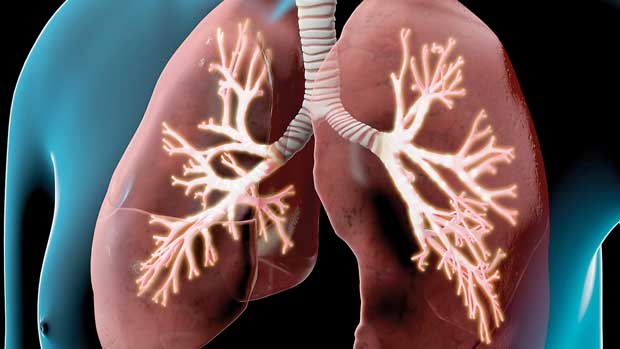09 Mar 2018 - {{hitsCtrl.values.hits}}

 Surgeons today are coping with a large number of high risk respiratory patients. This may be due to prolonged life expectancy, increased prevalence of COPD or greater needs for invasive diagnostic procedures and surgical interventions.
Surgeons today are coping with a large number of high risk respiratory patients. This may be due to prolonged life expectancy, increased prevalence of COPD or greater needs for invasive diagnostic procedures and surgical interventions.
Chronic Obstructive Pulmonary Disease (COPD) is a chronic inflammatory lung disease that causes obstructed airflow from lungs. According to Dr. Sumana Handagala, Consultant Thoracic Surgeon at the National Hospital for Respiratory Diseases, Welisara, certain patients with other respiratory diseases may also have COPD. Hence the prevalence of COPD in general surgical patients is 5-10% whereas for cardiac and thoracic patients it could be 10-12% and 40% respectively.
Common risk factors
Some of the common risk factors of COPD include;
“COPD is not only a risk to life, but it will also be a heavy economic burden as well,” says Dr. Handagala, elaborating on the intensity of the illness. Prolonged hospital stay, ventilation and failure of other organs such as heart or renal failure may add to this burden, says the doctor.
Complications
When one develops COPD, several lung related complications may arise. These include
Preparing patients for surgery
Speaking further, Dr. Handagala said that when patients are getting ready for surgery, they need to be assessed and prepared accordingly. “For emergency operations we may not have time to do a lengthy preparation. Whenever possible we take a chest physician’s opinion regarding perioperative care of the patient.
The assessment may include Pulmonary Function Tests; Spirometry – where the lung function is measured, specifically the volume or flow of air that can be inhaled and exhaled or a more sophisticated DLCO Test – a test of the diffusing capacity of the lungs for Carbon Monoxide. An Arterial Blood Gas analysis could also be done which measures the amount of oxygen and carbon dioxide in blood. Other procedures include physiotherapy (percussion ,vibration, postural drainage and Inspiratory Muscle Strengthening), nebulisation, prescribing oral medicine and getting the patient to stop smoking for a few days. In addition to that assessment of the heart with an ECG and a 2D Echocardiogram should also be performed.

Planning a surgery for COPD patients
“Before patients settle in for a surgery we should look at its absolute necessity,” says Dr. Handagala. “Without going in for an open surgery operation sometimes a patient could undergo a minimal access procedure such as a keyhole surgery. In addition to that there are other multi-model analgesic regimens such as combining different modes of painkillers. This not only reduces the Surgical Stress Response, but it also speeds up the physiologic recovery. Therefore patients only have to spend a short hospital stay. In addition to that there are smooth anaesthetic techniques which could be performed.”
Post-operative care
Speaking further Dr. Handagala adds that pre-operatively educating the patient will make him or her mentally prepared for the surgery. “They could be given physiotherapy and supported further. If not they will be in pain. Nebulisation could also be done in addition to lung recruitment manoeuvres. It is important that early mobilisation is done so that the patient can move around rather than being stationary. The patient should be pain free and therefore certain painkillers could be prescribed. Once the patient is discharged he should be given inhalers and a follow up needs to be done until he is fully healed. It would be best if the COPD follow up could be done by a chest physician,” he says.
22 Dec 2024 8 hours ago
22 Dec 2024 8 hours ago
22 Dec 2024 22 Dec 2024
22 Dec 2024 22 Dec 2024
22 Dec 2024 22 Dec 2024